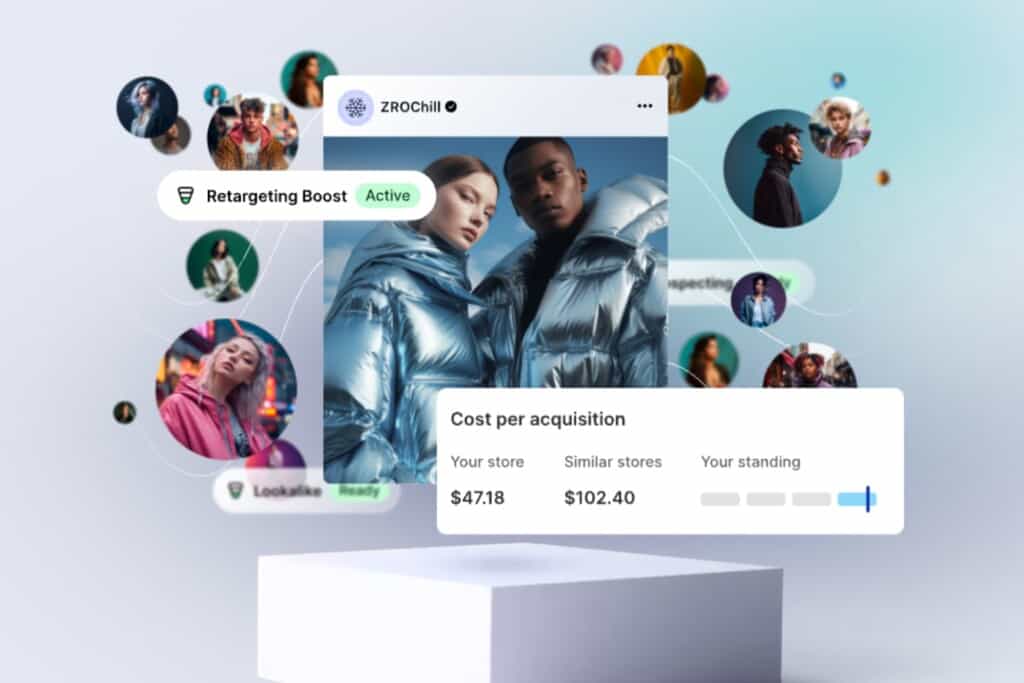Enhance your eCommerce offering with Shopify
We’re big fans of Shopify at Atomic Smash – like us, they’re committed to evolution. The platform is consistently being enhanced and adapting to changing consumer needs and expectations.
Shopify is widely regarded as one of the industry-leading eCommerce platforms. It currently powers over 4 million online stores globally (here are some stores we love) and scales and adapts to suit business needs.
It has continued to grow steadily since its inception in 2006 as a platform for selling snowboards.
We’re an agency that enhances Shopify stores and we love how the platform is constantly working to improve the user journey. The platform’s bi-annual updates bring in the latest technology; new functionality and extensions that enable businesses to fine-tune their eCommerce stores and stand out amongst the competition.
We know that online shoppers want personalised content. They want a seamless experience. They value trust and authenticity. And they want to be able to shop at their convenience on whatever platform or device they choose.
At the same time, each customer has their own unique needs and motivations, and the optimal user journey will look different for every business.

We’ve already taken a deep dive into Shopify’s Winter ‘24 Edition, and now we’ll take a closer look at how eCommerce brands can harness Shopify’s features to these key areas:
-
User research
-
Personalisation strategies
-
Creating a seamless shopping experience
-
Building trust and credibility
-
Data-driven optimisation
User research to build better user journeys on Shopify
The first step in crafting an effective user journey is understanding who your target audience is and what motivates their purchase decisions. This will allow you to focus your efforts on the people most likely to buy your product or service.
There are several ways to conduct user research. For instance, user testing, which involves observing people interact with your website and asking questions to understand their behaviour. It’s a great way to receive direct, real-time feedback in a user’s own words.
You can identify wider patterns and trends in user behaviour by examining the data gathered through online accounts, website analytics and engagement on social platforms.
Understanding who your users are, the apps or devices they use to browse and buy from, and the type of content they engage with helps you tailor your marketing strategy and campaigns accordingly. For example, if you notice a large amount of referral traffic coming from a particular app or search engine, you could invest in more paid advertising on that platform.
News you can use
Subscribe to our newsletter today to stay in the loop about the latest industry trends and insights.
Personalisation strategies for Shopify
According to a 2022 survey, 73% of consumers expect brands to understand their unique needs and expectations, and over half expect all offers they receive to be personalised.
When examining your user journey, look for opportunities to add a personal touch. This could be as simple as displaying a customer’s name after they log in, or offering them promotions based on their purchase history.
You don’t have to be an expert programmer to build personalisation into your eCommerce strategy. Shopify has a range of features and plugins designed to facilitate more personalised experiences, such as:
- Customisable email templates
- Product recommendation quizzes
- Build-your own product bundles
The Winter ‘24 Edition also features a more streamlined user management system that simplifies the process of transferring user data between channels, automating email communications triggered by user actions.
This allows specialised notes to be added to user profiles, ensuring consistent customer support across different touchpoints.
Strengthen user journeys on Shopify with data-driven optimisation
Customers may choose to end their journey on your website for a multitude of reasons. Perhaps they simply aren’t ready to complete their purchase at that moment. Others may drop off due to technical issues, because a checkout process is too complex for the device they’re using, or due to unexpected shipping costs.
Whatever the reason, the answers become clearer when you analyse your data. Measure your website’s performance with clearly defined metrics, and monitor the results of different strategies against these metrics. This will allow you to experiment with different approaches to understand what resonates with your audience.
Shopify’s Winter ‘24 updates included several enhanced analytics features, such as a new dashboard with a customisable layout. This allows you to choose the metrics displayed. Plus, smarter algorithms help you maximise ad performance with stronger retargeting and benchmarks.
Shopify has also added the capability to segment customers by the channel that generated their user ID, allowing for greater precision in your marketing outreach.
Unlock unique UX insights
Our Insights service will help you get the most out of your Shopify store.
Creating a seamless shopping experience
The rise of mobile apps and social commerce means that brands aiming to thrive in eCommerce need to provide a seamless, consistent user journey across multiple touchpoints.
With over 20% of Shopify’s total traffic coming from mobile devices, it’s essential that eCommerce brands cater to this traffic. Achieve this by:
- Optimising your product pages with compelling visuals and concise, up-to-date content
- Streamlining your checkout process to minimise the number of clicks it takes to complete a purchase
- Customising your checkout process to create a unique experience that aligns with customer needs and expectations
The team at Shopify is consistently reviewing the checkout experience. They are seeking new ways to save time and clicks – their latest update takes 4 seconds off the checkout process, while offering extra customisation of checkout pages to Shopify Plus customers.
Case study: SS Great Britain
Our client, Bristol-based historical attraction SS Great Britain, wanted to enhance the experience for users visiting their online gift shop, to better align with the positive in-person experience.
We conducted a UX audit of their existing Shopify store as well as a more in-depth technical investigation. This helped up to identify points of custoemr frustration and opportunities for improvement. Then, we made a series of adjustments to optimise their checkout process and overall user journey. This included:
- Improving accessibility for a more inclusive website that also boosted its performance and search rankings
- Creating greater consistency across pages through tweaks to fonts, colours and logos
- Removing redundant features on the checkout page

Building trust and credibility
Trust plays an important role in attracting and retaining customers. A recent study found that more than 67% of customers have stopped shopping after something about the website aroused their suspicion.
The study also found that websites with too many popups or large promotional banners are perceived as untrustworthy. Meanwhile, websites with positive reviews and prominent contact information were more likely to be trusted.
Measures to build brand trust
Today’s consumers are more aware of how their data is used. It’s more important than ever to reassure your customers that their information will be handled securely. Measures you can take to build brand trust include:
- Performing regular security and performance audits on your website
- Acting swiftly on any security breaches or suspicious activity
- Displaying trust badges and certifications prominently to build credibility
- Giving users greater control over their privacy settings
In addition to offering built-in privacy management tools and a secure checkout process, Shopify’s latest updates allow for reviews and testimonials to be automatically added through a growing list of review partners. This helps you leverage positive feedback and provide greater transparency over your products.
Case study: House of Voltaire
Non-profits are held to higher standards of ethics and social responsibility. That means establishing brand trust is even more important.
Our client Studio Voltaire is one of the UK’s leading non-profits in the arts sector. They use their Shopify store, House of Voltaire, to sell artworks created by underrepresented artists.
We created a more seamless, consistent experience between the main Studio Voltaire website and the House of Voltaire store. When users navigate from the main site to the store, visual consistency maintains trust.
Our developers achieved this through a series of incremental improvements to the website. This included design tweaks, clearer product categories and optimised product pages.

Takeaways
eCommerce businesses with Shopify stores can leverage its capabilities in the following ways:
- Conducting in-depth user research
- Crafting personalisation strategies
- Creating a seamless shopping experience
- Building trust and credibility
- Harnessing data-driven optimisation
Our team of expert developers, designers and strategists can draw on their skills, research and experience to craft websites tailored to your business needs.
Do you have an existing Shopify website? We can help you optimise it with ongoing improvements and updates, and recommend new features.
Contact us for a user journey audit
We’ll help you create optimal user journeys. So your customers shop with you again and again.